
Vilnius: short stories
‘There is a myth, sometimes widespread,
that a person need only do inner work, in order to be alive like this;
that a man is entirely responsible for his own problems; and that to cure himself, he need only to change himself...
The fact is, a person is so far formed by his surroundings, that his state of harmony depends entirely on his harmony with his surroundings.’
Christopher Alexander et al., The Timeless Way of Buildings
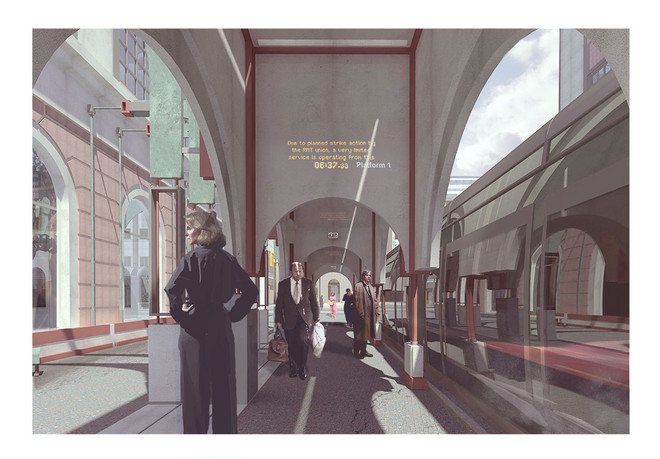
‘Vilnius: short stories’ is a design exploration, proposing design strategy and details for three new tram stations in Vilnius city, Lithuania. Project aims to look at these small pieces of infrastructural architecture as mediators of different civic spaces. Therefore suggesting that small station typology can be contextual and subject for spatial cross-programming, as opposite to a widespread practice of homogenous and minimized designs for various small scale station.
As a way to approach this, project primarily focuses on narrative based design methodology, where architectural and mythical setting of a place constructs a script for a new intervention. Further on, three ‘urban acupunctures’ are created, vastly focusing on spatial cognition of the sites. All to imagine a gradient of civic spaces that the new tram infrastructure create, highlight or complement to.
'Vilnius: short stories' project's brief
Moving through or passing by: mental maps
When we discuss cities, we tend to talk about what various places look like or perhaps how it feels to be in those places. But to end there is to miss half of the story because we experience most parts of cities through velocity: we glide past them on the way to somewhere else. In his book ‘Happy city: transforming our lives through urban design’, Charles Montgomery claims that the question of mobility is not merely a matter of technology or economics but of culture, psychology and the vast variation in our preferences. In this particular context, I am interested how transit is formulating our perception of urban environment.’
Research points out that our recollection of the urban landscapes is closely connected with both physical and mental effort. The less you have to think about your trip, actually, more in control you feel and easier the journey seems. This pays respect to well developed and clear public transport. More importantly it opens up an opportunity for the investigation of how one meets and learns the city, comparing commute routes, modes and speeds.
‘After all, brain is hardwired to produce anxiety hormones, when we are unsure of the location in a complex environment.’ (G. Stenberg).
More specifically, project operates within two sets of restraints, which obviously overlap within the process:
First one being Functional design guides. These are not only coming from international design requirements (including safety, accessibility, wayfinding, etc.). Formal design framework is also dictated by Full Possibility study, conducted by Vilnius municipality back in 2012. It points out the engineering and traffic strategies, locations for new stops all the way to train specifications, but also, more intriguingly, aspirations for the public realm, that the trams would affect. Briefly, study suggests 4 Tram lines wrapping around the city, with Tram stops mimicking locations of the existing bus stops. Further along we will be looking at the Line 1, running north/south of the city.
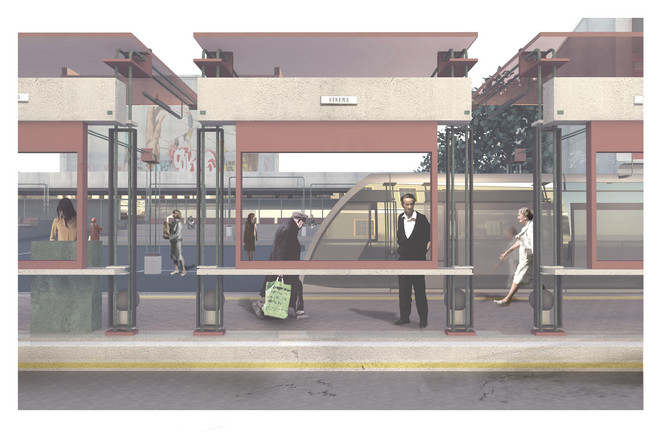
Another, more conceptual layer within the project, is the construction of the design scripts or specific narrative for each station. These are primarily concerned with the analysis of the context. And when one says context, that is not only meaning architectural/ geometrical context (which is hugely influential within the project), but also mythical context, history and stories of the places. All of which in combination makes the place what it is - not only in physical but in an empirical sense.
Project began mapping exercise, whilst visiting Vilnius city, which registers proposed Tram line 1 in scale 1: 4000. It combines the immediate context of the line, depicting different urban grains, strategically significant sites, such as: cultural or public venues, parks, landmarks, large shopping areas, pedestrian flows, prominent landscape features, elderships (communes).
Further, mapping zooms into immediate context of the 7 stops, in order to demonstrate variation of the environments, than can be found only in 10 km span.
This vertical, street section registration is concerned with the spatial and visual qualities of the sites, that can be somewhat quantified and investigated. French author of the book ‘urban cinematics’ Francoiz Penz suggests that good visual connectivity with the environment spans to around 40 m distance from the viewer's’ eye, and only around 50 degrees upwards in the vertical axes. Also, specific signs or commercials, designed to be viewed from the distance are influencing visual hierarchy. Therefore, in this investigation is depicting scale or these street sections, clearly marking what portions of the physical environment are dominating, memorable and what segments do give rhythm to the street.
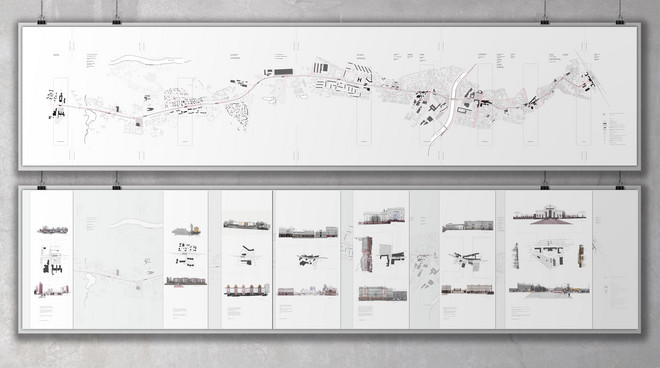
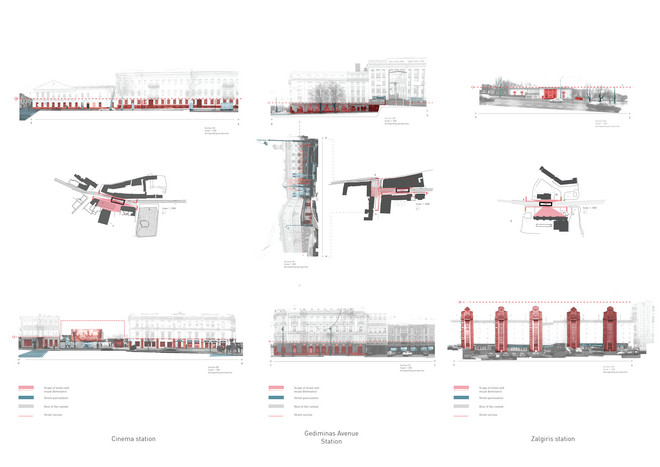
Projects’ exploration moves forward with:Narrative → experiential concept, spatial programmingGeometrical interrogation → appropriation of the experience to the physical space,
This reflects on three chosen and analysed transport junctions within the city, that are then reconfigured and appropriated for the new Tram infrastructure.
These are: Cinema Station, Gediminas Avenue Station and Zalgiris Station.
All three sites, situated in differing parts within the city, carry their own symbolics, myths and, simply, socioeconomic contexts. Furthermore, rich formal/ architectural surroundings, dictate not only confinements for spatial arrangements, but also their formal/ decorative expression. All to further interpret the concept of contextuality.
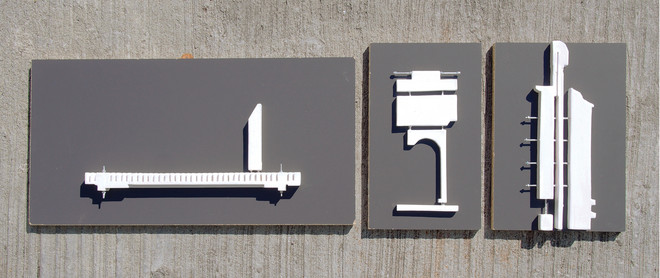
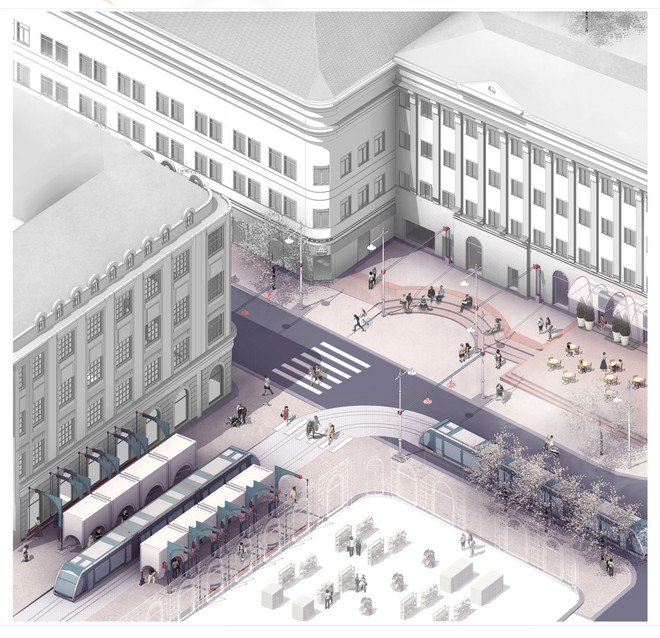
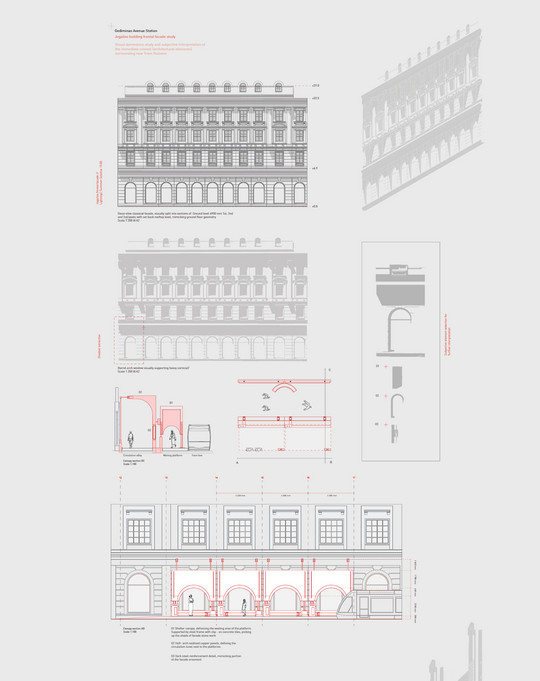
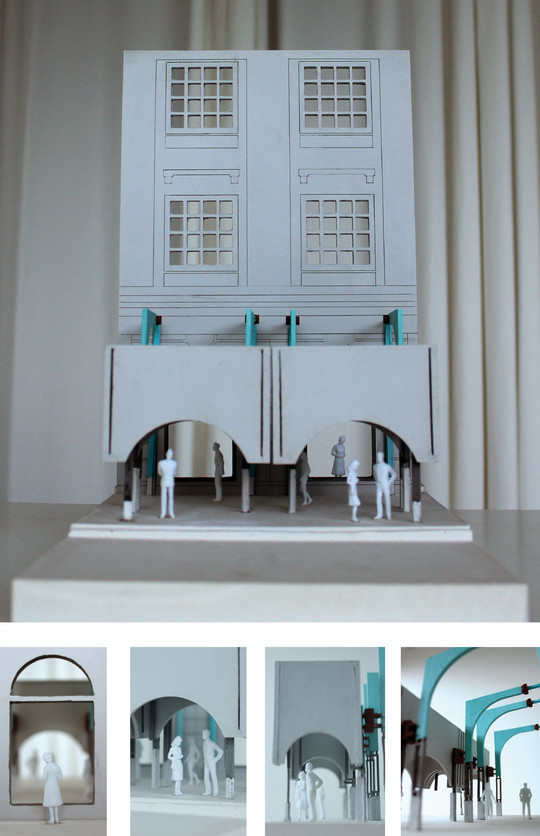

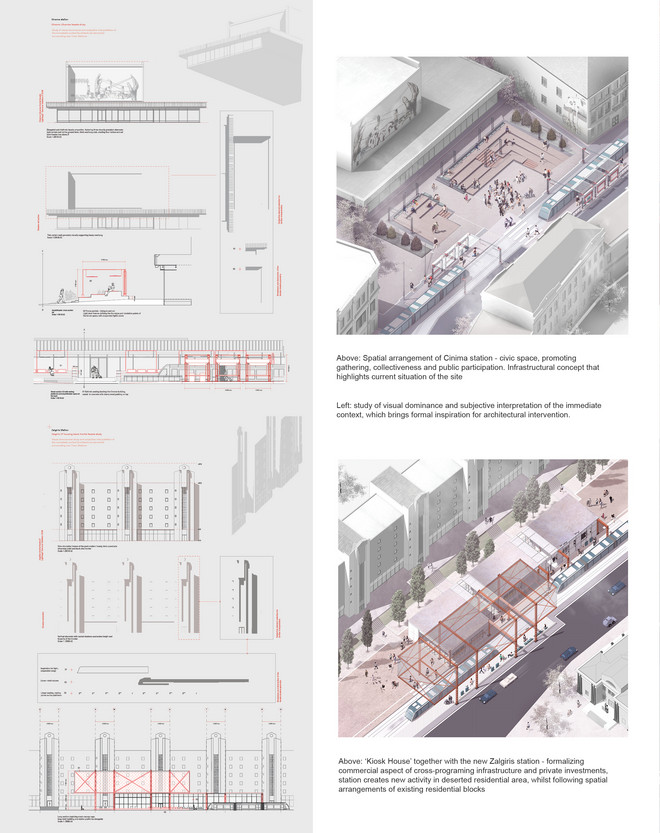
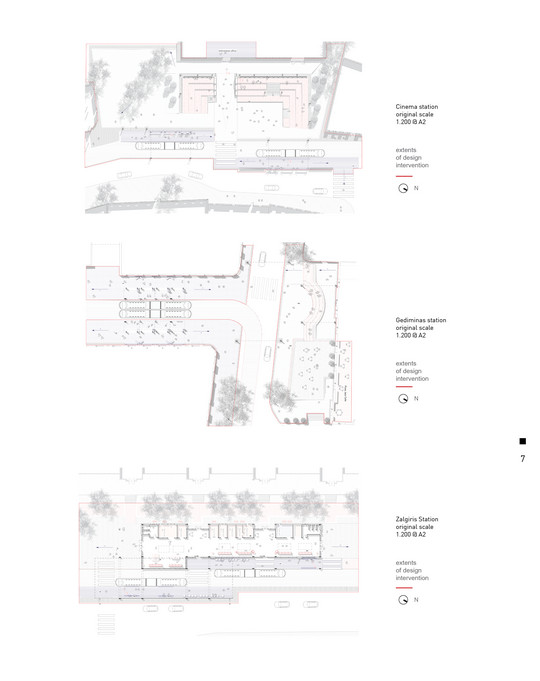
From sensitive and subtle decor elements, to bold and almost forceful, yet appropriate crowd management moves, project only starts to grind the topic of urban spatial cognition. Yet, first and foremost promoting contextuality - something that can be challenged through the lense of modularity, economical construction and repetition. As industry representative, one must engage in the discussion of creating a sense of place, versus mechanical efficiency regarding infrastructural architecture.
Question arises: can we mediate?
Deimante Bazyte,
Vilnius: short stories
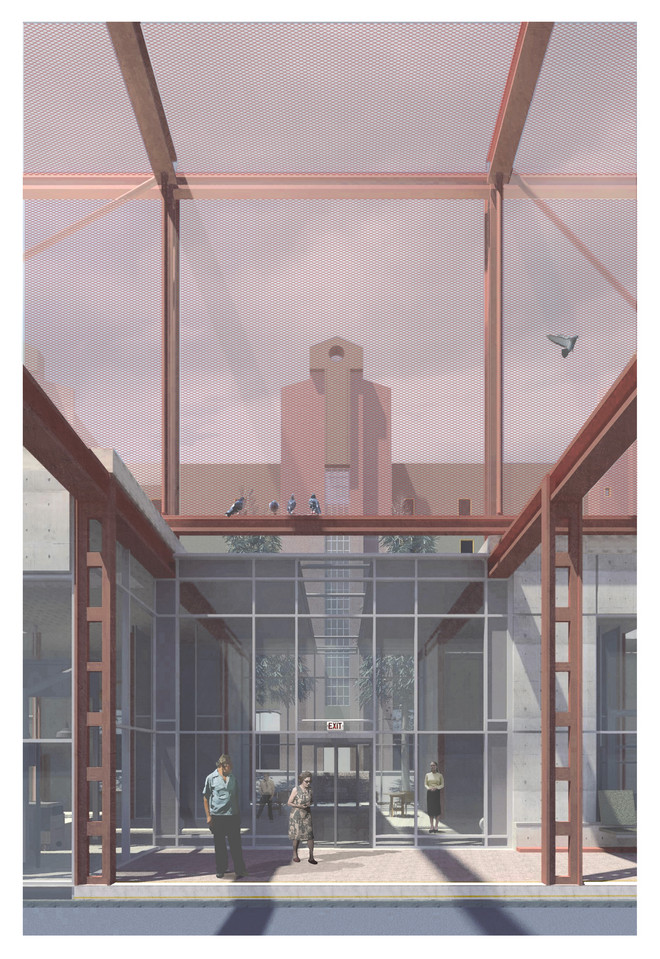
Det Kongelige Akademi understøtter FN’s verdensmål
Siden 2017 har Det Kongelige Akademi arbejdet med FN’s verdensmål. Det afspejler sig i forskning, undervisning og afgangsprojekter. Dette projekt har forholdt sig til følgende FN-mål













